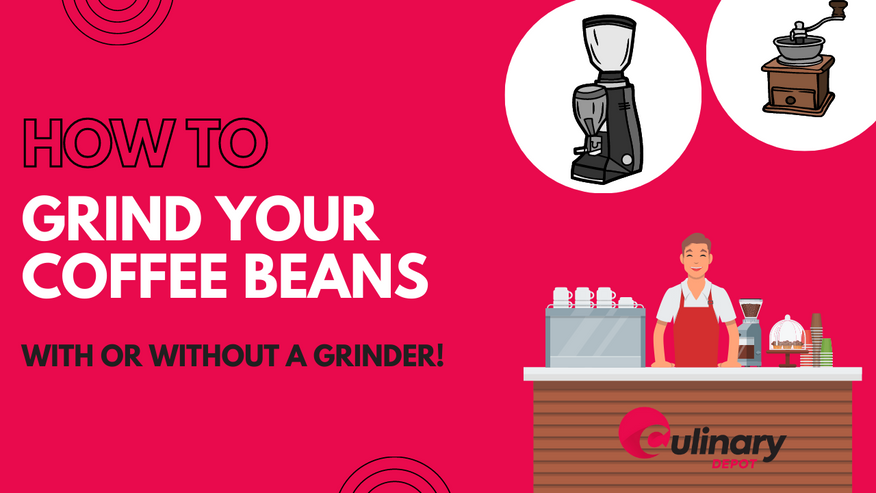May 25th 2022 - Monica Cunanan
How to Grind Coffee Beans — With or Without a Grinder
For most of us, sipping a delicious cup of coffee in the morning is a delightful ritual. From the first whiff of fresh beans wafting from the package to the sounds of your percolator, single-serve, or drip brewer, making coffee is a comforting way to start the day.
Most coffee drinkers buy and prepare ground coffee at home. Buying your espresso beans to make coffee ground certainly saves time and energy when you’re on the go, but learning how to properly blitz coffee beans at home can make a big difference in the flavor and textures you experience.
Why Do I Have To Worry About The Grind?
Grinding whole bean coffee right before you brew it ensures maximum freshness and flavor. Coffee beans contain volatile oils that impart most if not all of the flavor you taste when you drink coffee. When beans are ground, the oils in coffee beans react with oxygen and begin evaporating. The longer your ground beans are exposed to the air, they may lose some of their flavors.
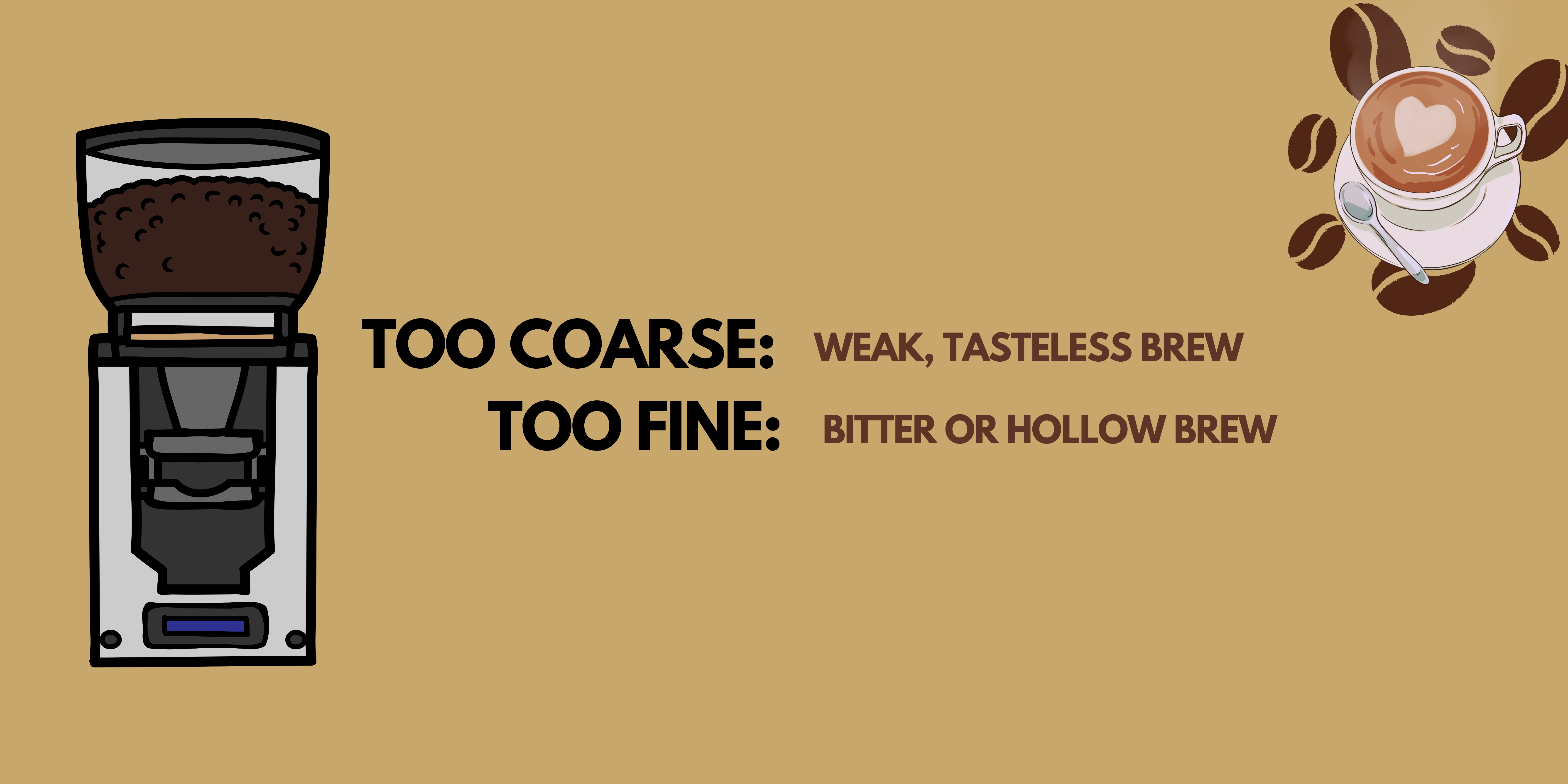
Water interacts with coffee during brewing to produce a variety of effects on taste and mouthfeel, including bitterness, acidity, body, and aroma. The size and texture of your grind is important because the more contact between water and coffee during the brewing process the faster it will be extracted. An inconsistent grind is never good for your coffee. If your grind is so fine that it prevents extraction, you might inadvertently prevent the extraction of beneficial compounds from the coffee grounds. If you have a coarse grind, water may flow through your coffee too quickly, producing a weak, tasteless brew.
Grind Levels for Grinding Coffee Beans
There are several different grind levels when it comes to grinding coffee beans and each level of grind will you give you a different aroma and flavor.
Here is a small breakdown of what the grinds look like. These can be accomplished simply by changing the size of your grinder.
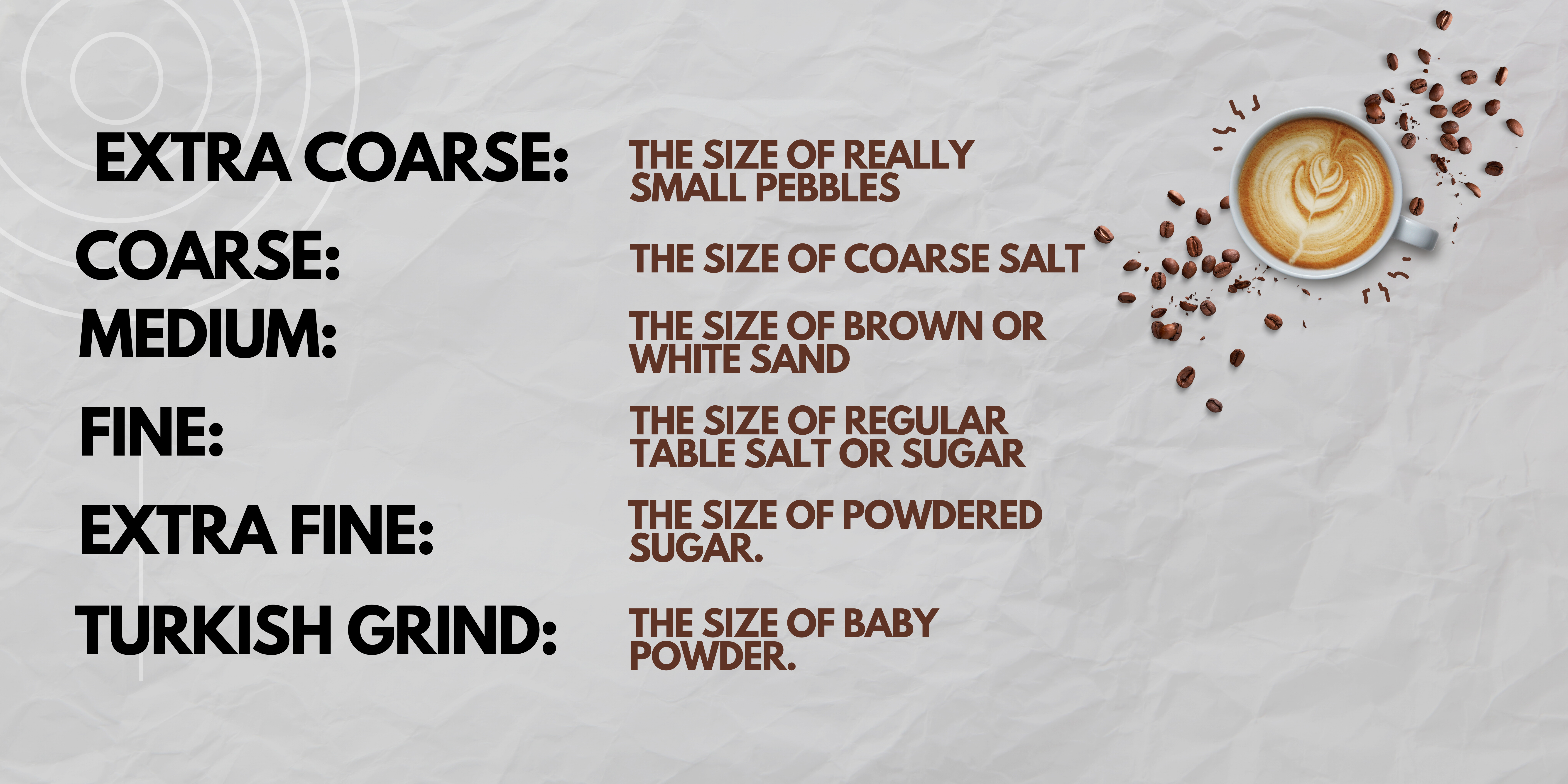
- Extra Coarse: The size of really small pebbles
- Coarse: The size of coarse salt
- Medium: The size of brown or white sand
- Fine: The size of regular table salt or sugar
- Extra Fine: The size of powdered sugar.
- Turkish Grind: The size of baby powder.
If you have under-extracted coffee grounds, your coffee might taste acidic, and salty. If you produce over-extracted coffee grounds, you might end up with produce coffee that tastes bitter or hollow with a lack of any notable coffee bean flavors.
If you are an aspiring barista or just an avid coffee drinker, you would know that you do not want these in your cuppa.
Check out this article if you want barista tips!
Ways to Grind Coffee with a Grinder
Blade Grinder
If you're just starting out with coffee, blade grinders can be an excellent, affordable option for grinding coffee beans. They're basically special-purpose spice grinders. If you're new (or even if you're not) to artisan coffee, starting out with a blade grinder will help you get a sense of what you like and don't like.
The limitations of a blender come down to inconsistencies in its ability to grind coffee beans. This leads to an unbalanced extraction of flavors from the coffee beans, which results in a generally flat, underwhelmed taste.
If you're not already using a burr grinder, then you really should consider buying one. It's a real eye-opener!
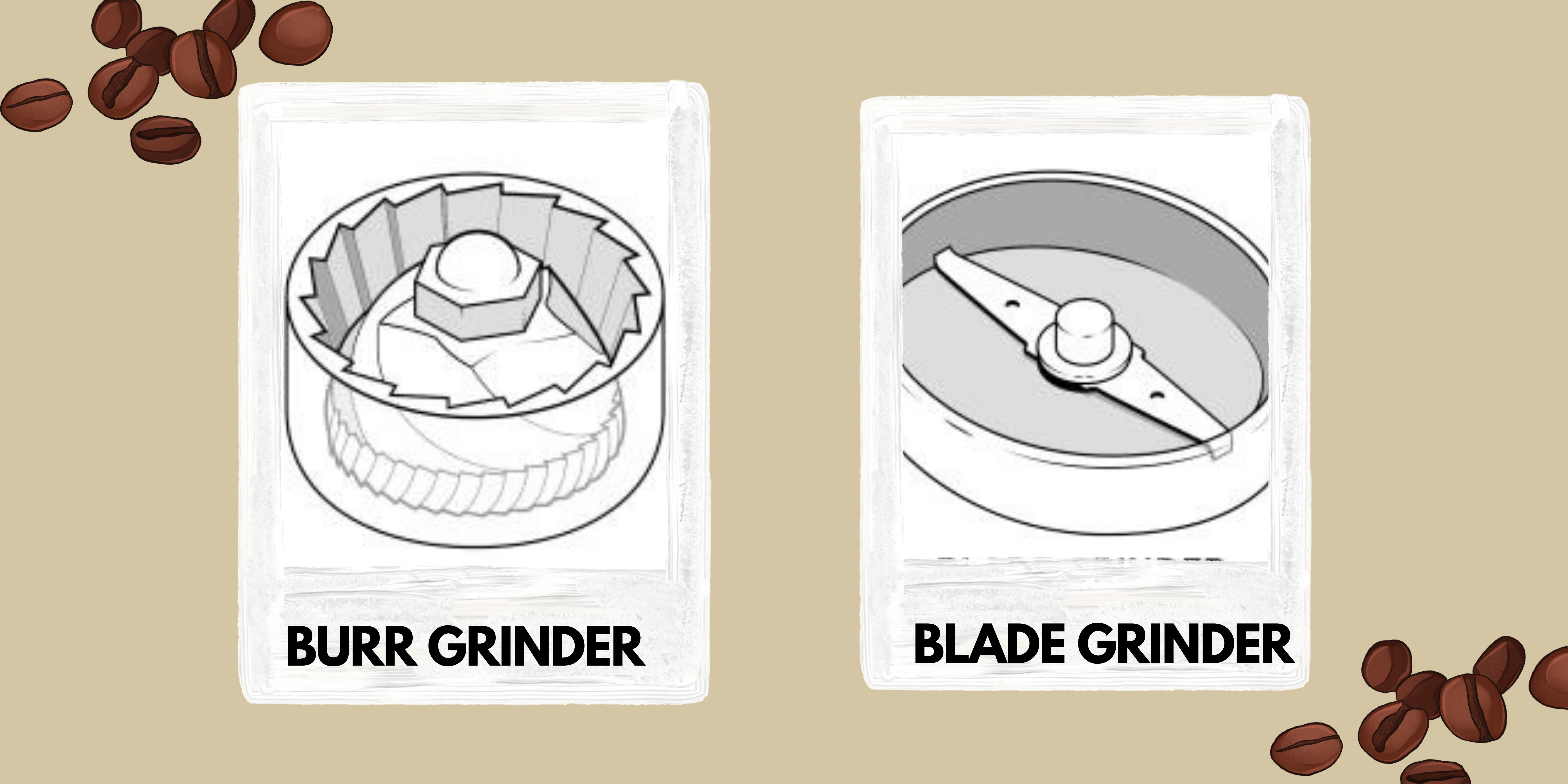
Burr Grinder
Using a burr grinder to grind coffee beans is, for most people, the best way to improve their coffee experience. There are many different types of burrs and at a wide range in price. Their multi-blade system creates more surfaces for coffee bean crushing, which results in a more even and consistent grind. They're also where all kinds of bells and whistles, from weight-based dosing to anti-static materials and titanium burrs. For drips, a grind size of 39 works best.
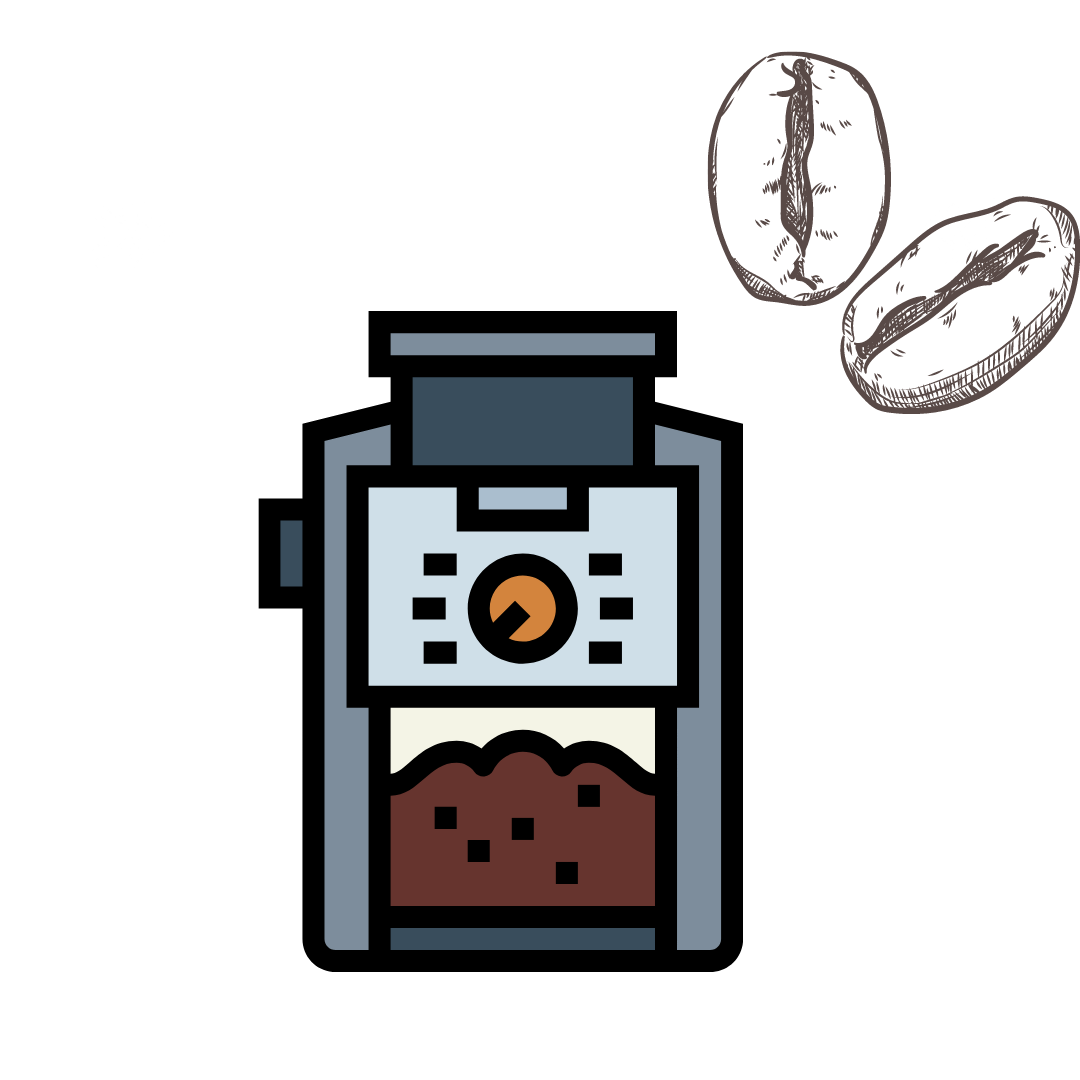
You want a burrs grinder to pulverize the coffee beans into smaller bits, which gives you more area than chopping them up and produce a consistent grind so that you always get the same tasting experience. From a coffee tasting standpoint, using a burr grinder to extract coffee flavors can help create depth and subtleties.
Types of Burr Grinders:
- Conical burr grinder: this is a professional-grade grinder that you can use at home. With its conical shape and multiple speeds, the Grinder Pro provides the most accurate grind sizes for different types of coffee beans.
- Flat Disk Burr Coffee Grinder: A burr coffee mill uses two spinning discs to crush the coffee beans. The flat disks can get hot, which changes the taste of the coffee but this grinder gives you a very precise grind every single time.
Ways to Grind Coffee Without a Grinder
Use a Blender
Blending your beans is an easy way to get them ground up into a smooth consistency.
However, keep in mind that there is no way to make the ground the same size. You'll still get a usable consistency even if you don't use the entire batch.
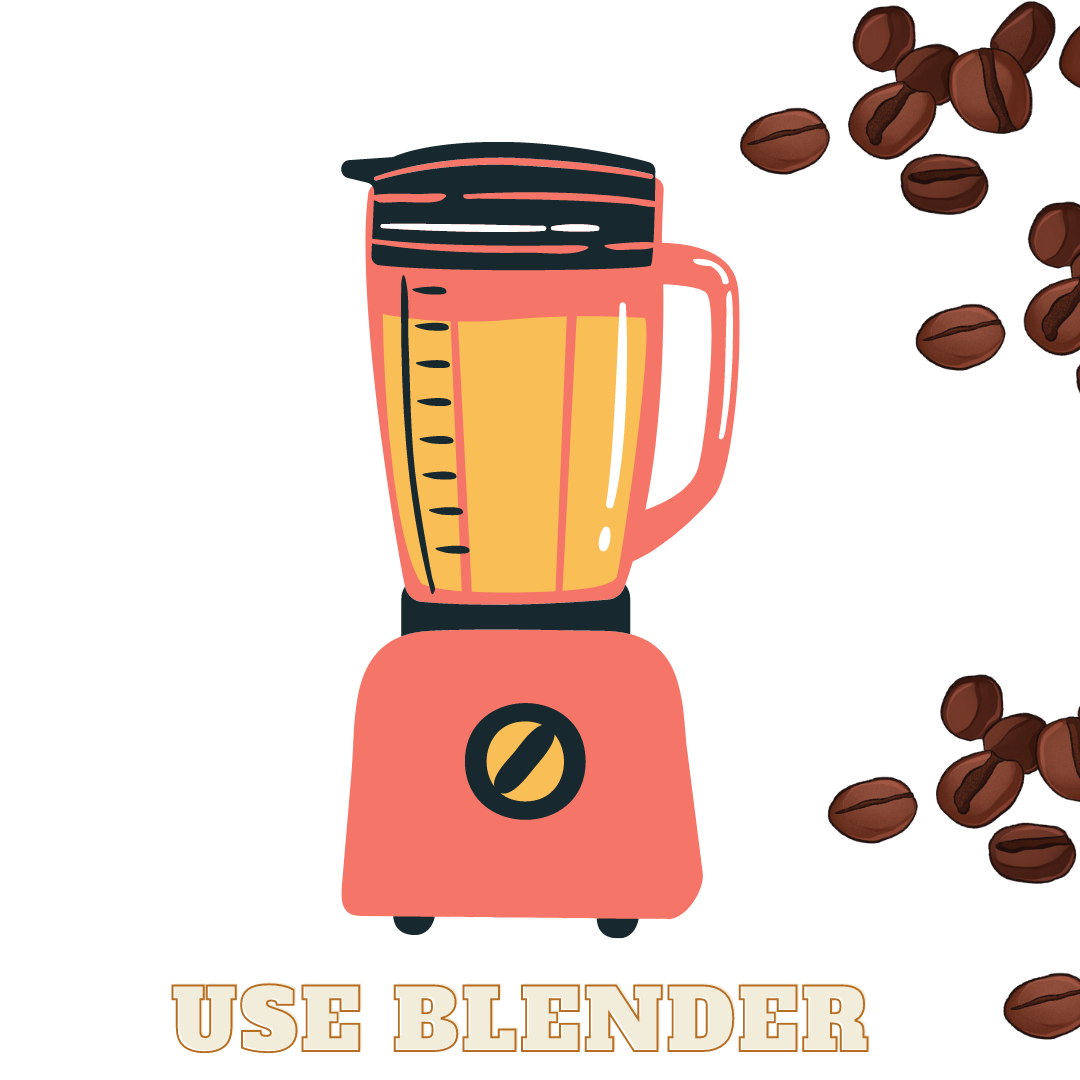
- Settings: If your blender doesn’t have a “grinder” setting, there’s no need to worry. Select the “medium-high” setting, or “grinder” setting if your blender has one
- Pour the coffee into the blender: Pour the desired amount is about ¼ cup to ½ cup of beans and close the lid shut.
- Be mindful of time: Blending beans creates heat and will often cook the beans while you're blending them. Grind the beans in time limits of 3 to 5 seconds. It’s important that you grind the beans for at least 20 seconds, perhaps up to 30 seconds if you really want them to be fine.
- Tilt: If needed, tilt the blender to the side while grinding to ensure that the grind is mostly consistent.
- Enjoy! After grinding the beans, use your own portable coffee maker to brew coffee. They're particularly useful when you're on the go!
Food Processor
This is the best, cheaper alternative if you do not want to use the blender. It may not be as good as a regular coffee grinder, but this method will satisfy you!
You’ll need more beans since the circumference of the food processor is usually wider than that of a blender. Don’t worry about the leftover grounds since you can store them in an airtight container.
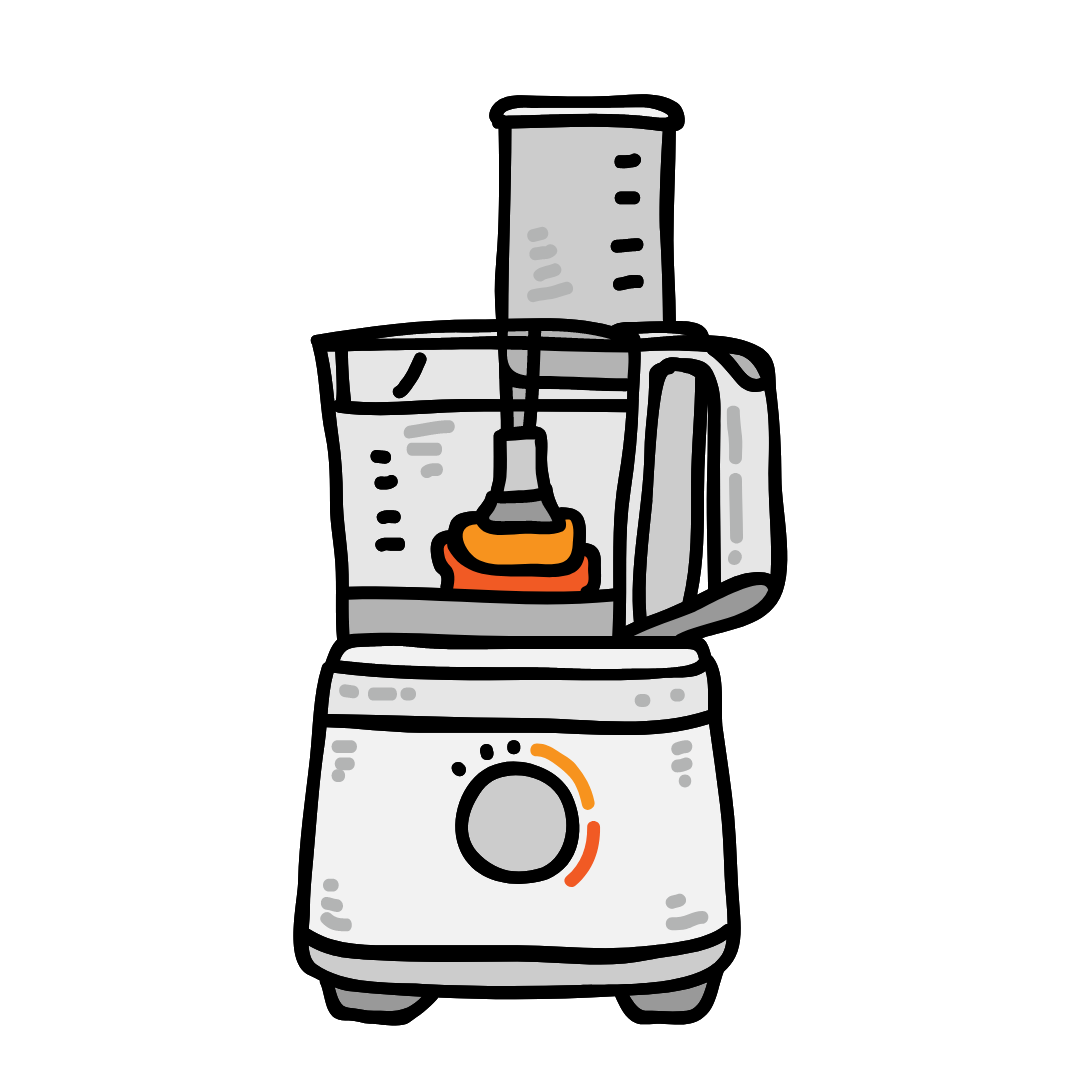
- Pour the coffee into the blender: Pour the desired amount is about ½ cup to 1 cup of beans and close the lid shut.
- Settings: Make sure that you are using the pulse setting. Grind the coffee beans in time limits of 3 to 5 seconds
- Repeat: If necessary, repeat the process until you get the desired consistency. Grind for a total time of up to 30 seconds.
- Tilt: If needed, tilt the blender to the side while grinding to ensure that the grind is mostly consistent.
Be an Amazing Coffee Connoisseur
Whether you’re trying to impress your friends or family with your amazing coffee skills or starting your own cafe, Culinary Depot has your back!
We provide equipment for professional and home baristas. May it be:
Cappucino/ Hot Chocolate Dispenser
Get in touch, and we'll help you get all the restaurant equipment you need to run your business!

